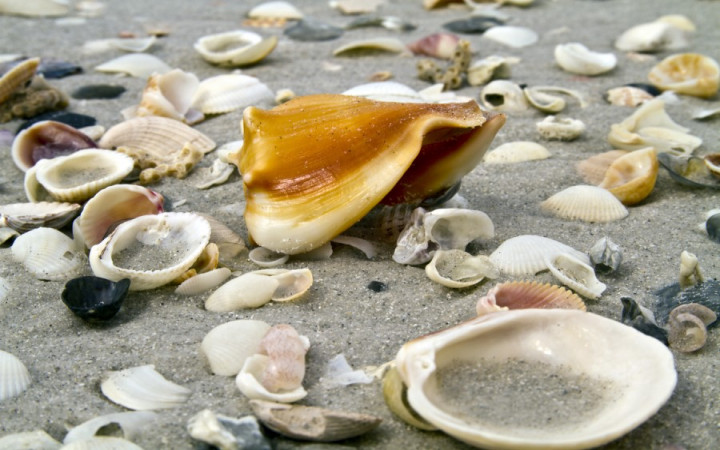Today’s Wonder of the Day was inspired by caitlin from NY. caitlin Wonders, “how are sea shells formed?” Thanks for WONDERing with us, caitlin!
Do you like tongue twisters? If you do, you've probably tried to say “She sells sea shells by the sea shore" several times quickly. Try it right now, if you want! It can be more difficult than you think.
Have you ever been to the sea shore? If you have, you know that there are many shops along the shore that sell sea shells. Some of those stores are operated by women, so you could definitely say that "she sells sea shells by the sea shore" when referring to such women.
The sea shells in shops by the sea shore can be beautiful. They come in all sorts of shapes, sizes, and colors. There almost seems to be no end to the different kinds of sea shells you can find in these stores. But before you buy sea shells in a store, see what you can find on the beaches along the shore.
A leisurely stroll along the beach will reveal thousands upon thousands of sea shells. Many of them are mere pieces and fragments of complete shells, but it's also possible to find the kinds of complete, beautiful sea shells you'd find in the stores along the shore.
So where do all these sea shells come from? Is there an undersea factory where mermaids and dolphins work hard to produce shells that they then send on the waves to shore? That's not it at all! The sea shells you see scattered along the shore are actually former homes! Homes for whom? Mollusks, of course! Sea shells are the left-behind external skeletons of mollusks.
Mollusks are small invertebrate animals that usually have delicate, slimy bodies. As mollusks grow, their shells protect their fragile bodies from the elements and predators that hunt them.
As mollusks live their daily lives in the sea, they take in salts and chemicals from the water around them. As they process these materials, they secrete calcium carbonate, which hardens on the outside of their bodies and begins to form a hard outer shell.
Although its shell is attached to it, it's not part of the living body of a mollusk. This is because the shell is formed from minerals, not mollusk cells. As mollusks continue to excrete calcium carbonate, their shells continue to grow. When a mollusk dies, it leaves its shell behind for you to find along the sea shore.
A mollusk's shell material, called nacre, is mostly calcium. However, it also usually has an outer layer of hard scleroprotein, which is similar to human fingernails.
There are many different types of mollusks. Moreover, different seas around the world offer mollusks all sorts of different diets. The different types of mollusks eating different types of diets explain the incredible variety of sea shells that can be seen on the shores of seas around the world.
For example, warm tropical waters provide more food sources for mollusks. As a result, tropical mollusks leave behind more colorful shells, since different foods provide different types of pigments. Cold-water mollusks, by comparison, tend to rely on more limited food supplies and leave behind shells that tend to be solid, darker colors.




